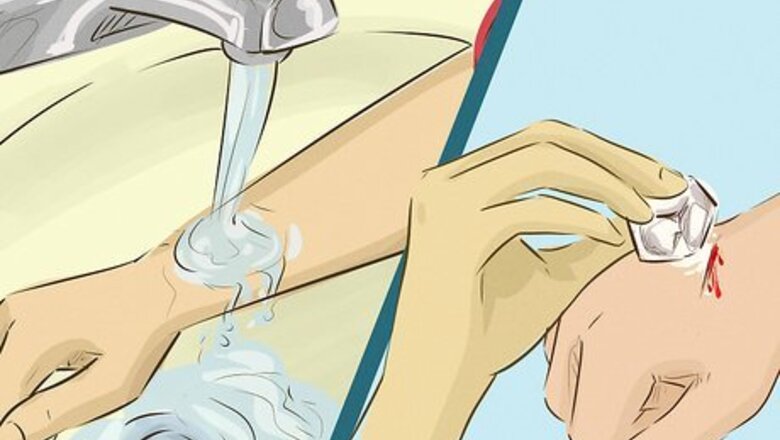
views
X
Trustworthy Source
MedlinePlus
Collection of medical information sourced from the US National Library of Medicine
Go to source
Research suggests uncontrolled or severe bleeding may lead to shock, which means you don't have enough blood in your body.[2]
X
Research source
You can likely treat mild bleeding injuries at home, but see a doctor immediately if you have severe bleeding or can't get your bleeding under control.
Stopping Minor Bleeding from Small Cuts
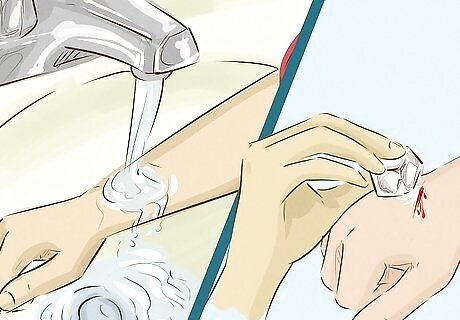
Rinse the cut with water. Running water will both clean the wound and help stop the bleeding. Run cold water over the cut to constrict the blood vessels and stop the bleeding. Doing the same with hot water will cauterize the cut, allowing the blood to clot. Don’t use both hot and cold water—just one or the other should do the trick. You can use an ice cube instead of cold water to close off the blood vessels. Hold the ice to the cut for a few seconds until the wound closes up and stops bleeding. If you have multiple small cuts on your body, taking a hot shower will clean off all the blood and cauterize the multiple gashes at the same time.
Apply pressure to the cut. After you clean the cut, apply pressure to it with a piece of clean tissue paper or gauze. Hold the tissue or gauze in place for several minutes, then check to see if the bleeding has stopped. If blood soaks through the tissue or gauze, replace it with a clean, dry piece.

Try a styptic pencil. These waxy pencils were originally made for shaving nicks and razor burn but work great for any small cut. Rub the pencil over your skin and let the mineral astringents it contains go to work. It will sting a bit on contact, but after a few seconds both the pain and bleeding will go away.
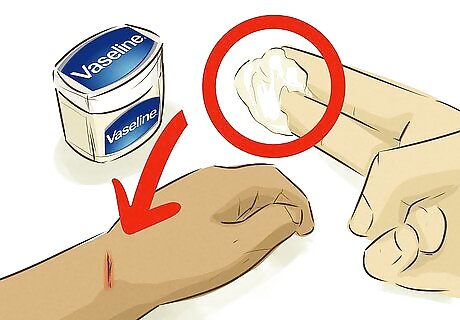
Add petroleum jelly to encourage clotting. As a result of the waxy texture of petroleum jelly or Vaseline, applying a small smear of it to minor cuts will block off the blood flow outside of the skin and give the wound time to clot. You can use regular lip balm if you don’t have any plain petroleum jelly or Vaseline on hand.
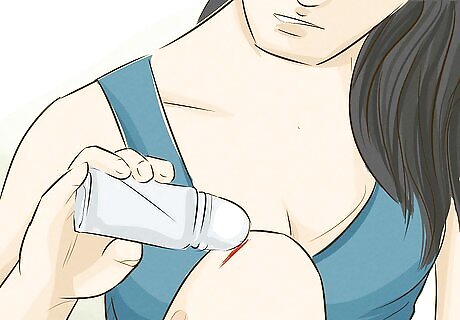
Rub on some antiperspirant. Similar to a styptic pencil, your deodorant has aluminum chloride which works as an astringent to stop the blood flow. Put some on your finger before smearing it over the cut, or rub the stick directly onto your nick.
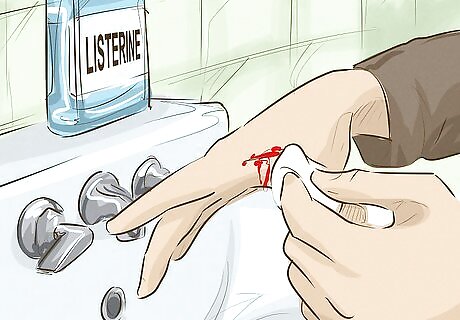
Dab on Listerine. Originally created as an aftershave, regular Listerine can disinfect your cut and help stop blood flow. Pour some directly over the cut or dip a cotton ball into the Listerine and dab it on. You should notice a decrease in blood flow after a minute or 2.

Use an alum block. This is a soap-like bar created from minerals which help to stop bleeding. Wet the alum block in water and gently rub it over the cut. There is no need to apply pressure as you place the block over your gash; the minerals will do the work themselves.

Apply white vinegar to disinfect the cut. The astringent properties of vinegar help to disinfect and clot small cuts. Dab a bit of white vinegar onto the cut with a cotton ball, and wait for the bleeding to stop.

Try witch hazel to stop bleeding. Similar to white vinegar, witch hazel acts as a natural astringent great for clotting small cuts. Pour a little over your cut or dab it on with a cotton ball for the same effect.
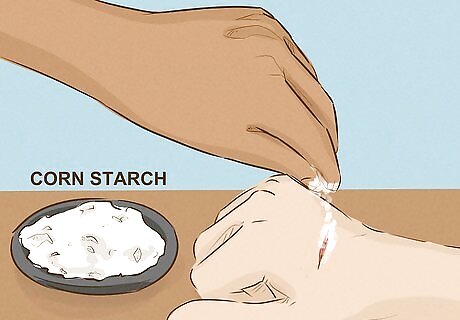
Put some cornstarch on the wound. Sprinkle a bit of cornstarch onto the cut, being careful not to rub it or cause any further abrasions. You can lightly press the powder onto the cut to help expedite the process. When the cut has stopped bleeding, use running water to rinse the cornstarch off.
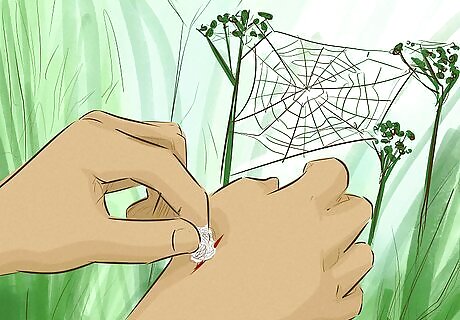
Use spiderwebs, in a pinch. This is a great option if you are cut while hiking or outdoors. Grab some (spider-free!) spiderwebs and place them over the cut, rolling them up if necessary. The webs will stanch the blood flow and give your cut time to clot internally.
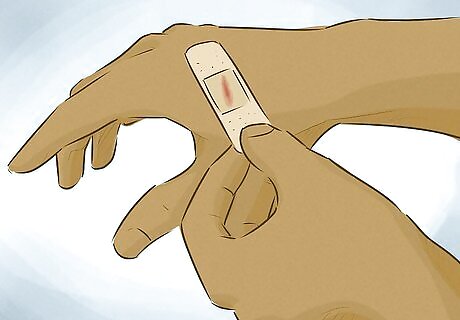
Dress the cut once the bleeding is under control. Apply a clean bandage or dressing to the wound to help keep out any dirt and stop further bleeding. You can use a simple band-aid or a piece of clean gauze.
Treating Serious Wounds
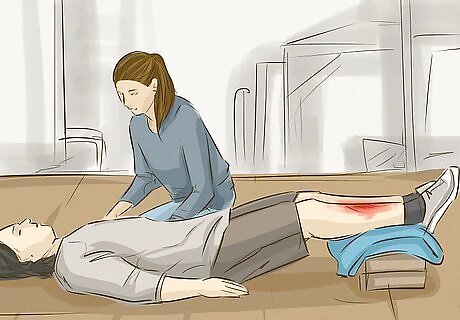
Lie down. It will help to lessen the likelihood of shock if you can elevate your legs or position your head lower than your trunk. If you are helping someone else, check their breathing and circulation before proceeding. If you suspect the person you are helping is in shock, seek medical attention or call emergency services right away.

Elevate a wounded limb. Raising the wounded limb (assuming it is an extremity that is injured) above the heart will help to reduce severe bleeding. If you suspect a broken bone, however, do not attempt to move the limb.
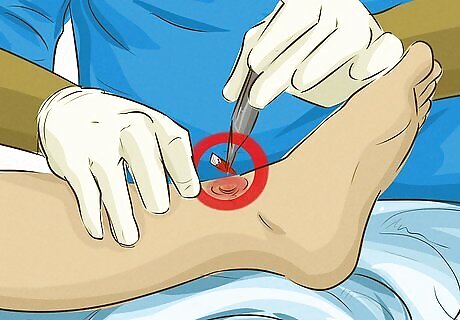
Remove any debris from the wound. Clean up any visible foreign body and dirt, but do not clean the wound thoroughly as this can aggravate the wound. Your immediate priority is to stop severe bleeding. Cleaning the wound can wait. If the foreign object is large, however (e.g., a large piece of glass, a knife, or similar), do not remove it. It is most likely stopping a lot of the bleeding itself. Just put pressure on the area around the object, taking care not to push it in further.
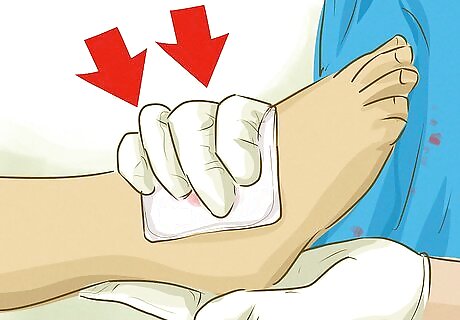
Apply firm pressure directly to the wound until the bleeding stops. Use a pad of clean gauze, dressing, or clothing. Even your hand can work if nothing else is available. Place your hand over the pad and apply firm pressure to the wound with your fingers or a hand.

Apply pressure steadily. If the injury is on a limb, you can use tape or a cloth wrapped around the wound to maintain pressure (a folded triangular bandage placed over the wound and tied is ideal). For injuries to the groin or other parts of the body where you cannot wrap the wound, use a heavy pad and keep using your hands to press on the wound.

Look for seepage from the wound. Add more gauze or additional bandages if the original soaks through. Do not over-wrap it, however, as increased bulk risks reducing pressure on the wound. If you suspect the bandage is not working, remove the bandage and pad and reassess the application. If the bleeding appears controlled, maintain pressure until you are sure the bleeding has stopped or medical help has arrived.
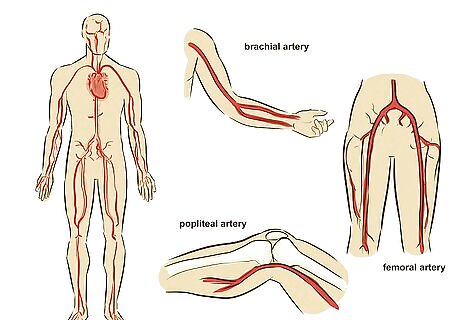
Use pressure points, if necessary. If you cannot stop the bleeding by pressure alone, combine using direct pressure to the wound with pressure to one of these pressure points. Use your fingers to press the blood vessel against the bone. The most commonly needed pressure points are described below: The brachial artery, for wounds on the lower arm. Runs on the inside of the arm between the elbow and armpit. The femoral artery, for thigh wounds. Runs along the groin near the bikini line. The popliteal artery, for wounds on the lower leg. This is found behind the knee.
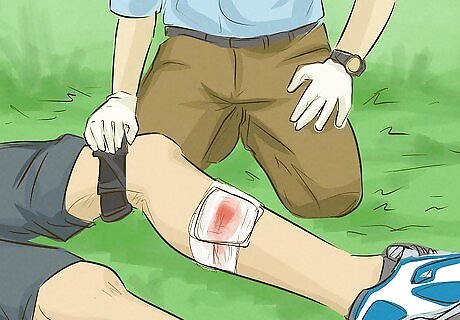
Continue applying pressure until the bleeding stops or help arrives. Do not stop applying pressure unless you are certain the bleeding has stopped. If blood is not obviously soaking through the dressing, check the wound occasionally to see if it is still bleeding. Do not apply pressure to an artery for longer than 5 minutes after the bleeding has stopped. Use a tourniquet if the bleeding is life-threatening. Tourniquets usually stop bleeding instantly if applied correctly, but incorrect tourniquet use can harm the patient.
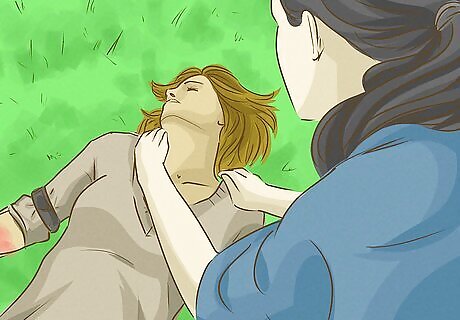
Monitor the victim’s breathing. Check that the bandages are not too tight. If the victim has cold, pale skin, toes or fingers that do not restore to normal color after compression, or the victim complains of numbness or tingling, it is probable that the bandaging is too tight.
Internal Bleeding
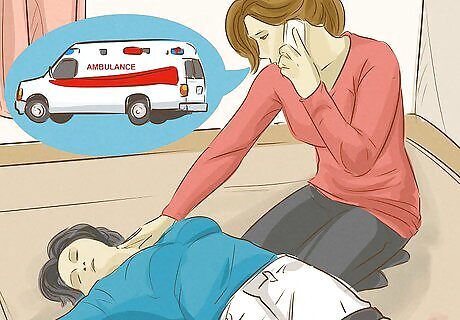
Call an ambulance immediately if you suspect internal bleeding. Get the bleeding victim to a hospital as quickly as possible. Internal bleeding cannot be treated at home and can only be dealt with by a doctor. Symptoms of internal bleeding may include: Rapid heartbeat Low blood pressure Cold, sweaty skin Dizziness or confusion Pain and inflammation near the site of the injury Bruising of the skin
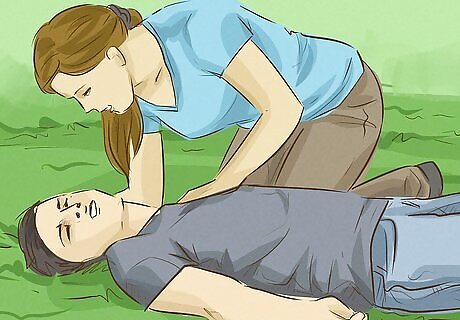
Relax in a comfortable position. Don't try to move, and remain laying down if you're able. If you are helping someone else with internal bleeding, keep them calm and resting comfortably to prevent further injury.

Check for breathing. Monitor the victim's airway, breathing, and circulation. Attend to external bleeding, if there is any.

Maintain normal body temperature. Keep the victim from getting too hot or too cold by applying rags dipped in water to the forehead.

















Comments
0 comment